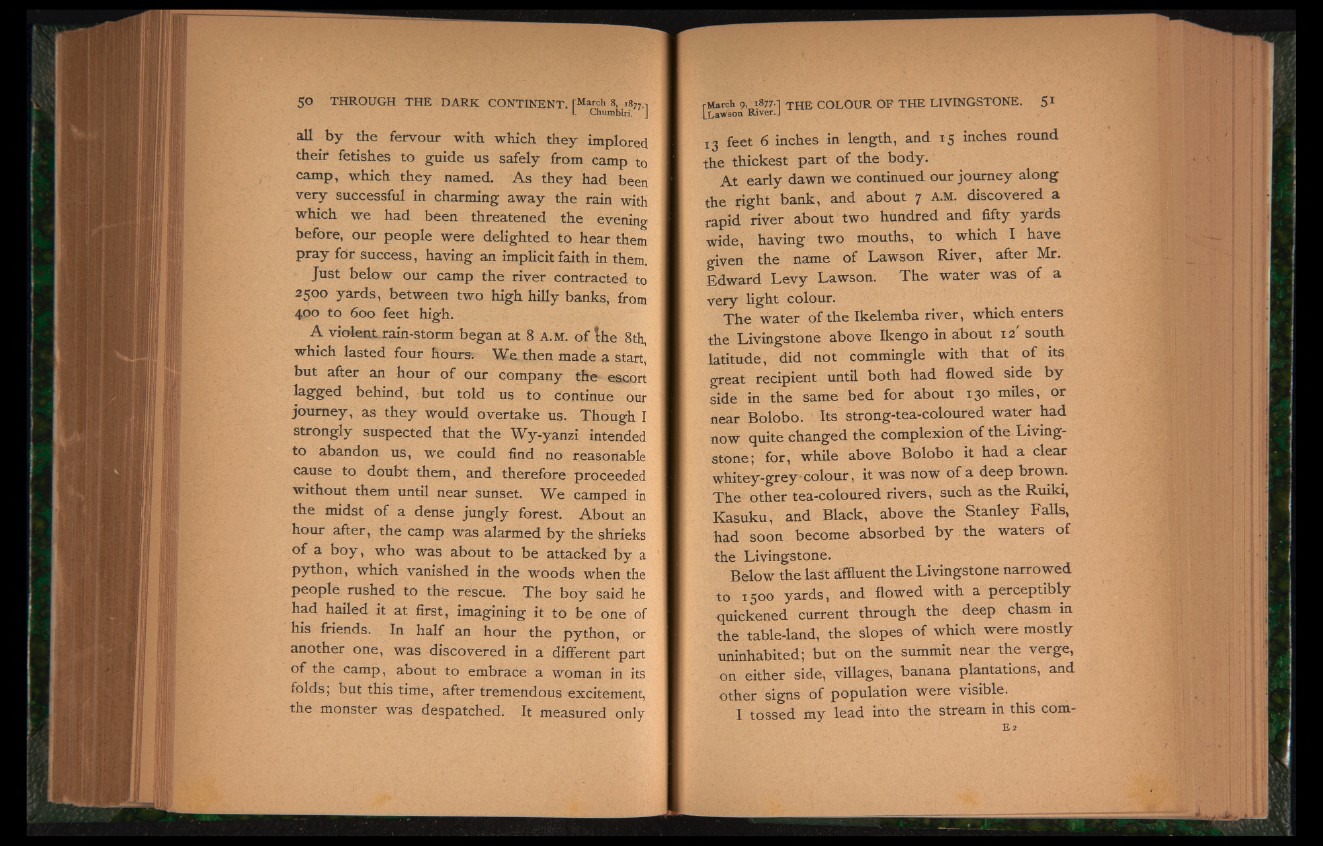
all by the fervour with which they implored
their fetishes to guide us safely from camp to
camp, which they named. As they had been
very successful in charming away the rain with
which we had been threatened the evening
before, our people were delighted to hear them
pray for success, having an implicit faith in them.
Just below our camp the river contracted to
2500 yards, between two high hilly banks, from
400 to 600 feet high.
A violenL rain-storm began at 8 A.M. of the 8th,
which lasted four hours. We then made a start,
but after an hour of our company the escort
lagged behind, but told us to continue our
journey, as they would overtake us. Though I
strongly suspected that the Wy-yanzi intended
to abandon us, we could find no reasonable
cause to doubt them, and therefore proceeded
without them until near sunset. We camped in
the midst of a dense jungly forest. About an
hour after, the camp was alarmed by the shrieks
of a boy, who was about to be attacked by a
python, which vanished in the woods when the
people rushed to the rescue. The boy said he
had hailed it at first, imagining it to be one of
his friends. In half an hour the python, or
another one, was discovered in a different part
of the camp, about to embrace a woman in its
folds; but this time, after tremendous excitement,
the monster was despatched. It measured only
rMarch 9, 1877.] t h e COLOUR OF THE LIVINGSTONE. 51
LLawson River. J
13 feet 6 inches in length, and 15 inches round
the thickest part of the body.
At early dawn we continued our journey along
the right bank, and about 7 AM. discovered a
rapid river about two hundred and fifty yards
wide, having two mouths, to which I have
given the name of Lawson River, after Mr.
Edward Levy Lawson. The water was of a
very light colour.
The water of the Ikelemba river, which enters
the Livingstone above Ikengo in about 12 south
latitude, did not commingle with that of its
great recipient until both had flowed side by
side in the same bed for about 130 miles, or
near Bolobo. Its strong-tea-coloured water had
now quite changed the complexion of the Livingstone;
for, while above Bolobo it had a clear
whitey-grey colour, it was now of a deep brown.
The other tea-coloured rivers, such as the Ruiki,
Kasuku, and Black, above the Stanley Falls,
had soon become absorbed by the waters of
the Livingstone.
Below the last affluent the Livingstone narrowed
to 1500 yards, and flowed with a perceptibly
quickened current through the deep chasm in
the table-land, the slopes of which were mostly
uninhabited; but on the summit near the verge,
on either side, villages, banana plantations, and
other signs of population were visible.
I tossed my lead into the stream in this com-
E2